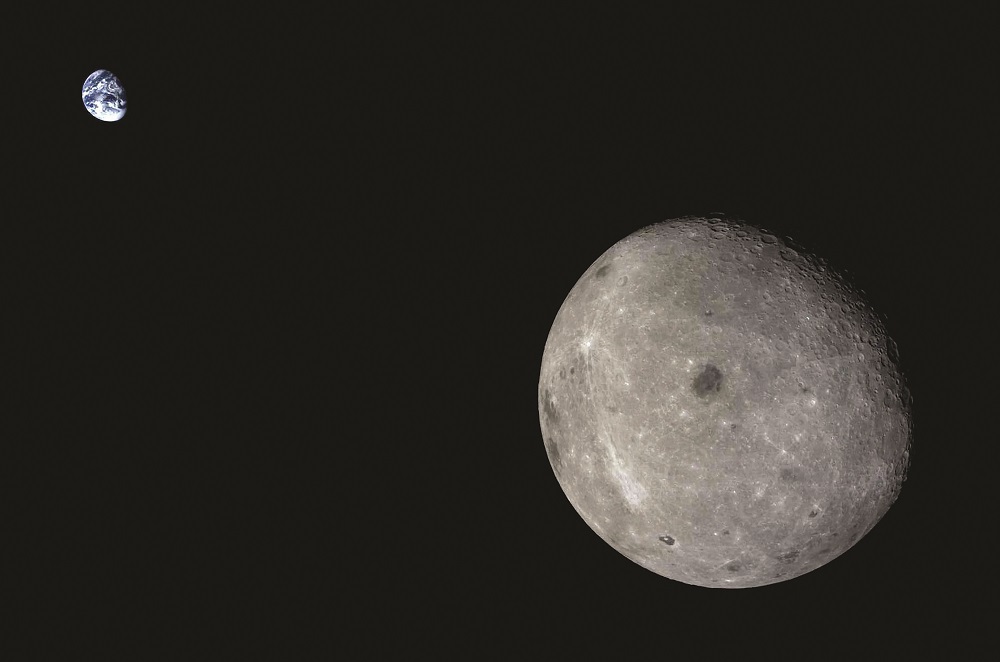PRESTON, United Kingdom — Chinese scientists are proposing cislunar space infrastructure to support lunar exploration, enhance the nation’s space industry and promote international collaboration.
The proposed infrastructure includes a comprehensive system providing data communication, positioning, navigation, and timing (PNT), as well as space situational monitoring services for ground-based, near-Earth, cislunar, lunar surface, and deep space users.
The article, titled Orbit Design Method of Near-Lunar Space Constellation, was published in the journal Chinese Space Science and Technology in June.
Authors including Yang Mengfei, a senior scientist at the China Academy of Space Technology, lay out conceptual framework and development plans for a phased constellation to support various human activities in cislunar space. Design focuses on communications capabilities and lunar navigation, as well as cost for deployment and maintenance.
A first phase would establish satellites in elliptical frozen orbits around the moon. A second phase would see further ELFO satellites and spacecraft at Earth-moon Lagrange points 1, 2, 4 and 5, a near-rectilinear halo orbit (NRHO), and a spacecraft in geostationary orbit, termed a cislunar space station.
A third and final phase would add satellites in existing and new distant retrograde orbits (DRO), forming a near-moon space and extended space constellations. The system also includes comprehensive ground-based facilities.
Challenges include developing high-precision orbital dynamics modeling, collaborative operation methods among different space segments, and establishing a unified time-space reference system. It will also require advanced communication and navigation technologies, including high-frequency, high-efficiency amplifiers, large-diameter high-gain antennas, and innovative integration of communication, PNT, and monitoring functions.
Supporting lunar crew and moon base plans
The cislunar space infrastructure is designed to support major national lunar exploration projects. It is also intended to accelerate the development of China’s space industry, and enhance national capabilities in science and space technology.
Previous reporting notes that China is developing plans for a constellation named Queqiao (“Magpie Bridge”) to support its crewed lunar and International Lunar Research Station (ILRS) plans. China plans to land its first astronauts on the moon before 2030 and begin building ILRS early in the next decade. The China-led ILRS seeks to advance lunar exploration and the utilization of lunar resources.
The Queqiao constellation would support the above projects but also promote a cislunar space economy and the space industry. It would drive growth in various sectors such as communication, navigation, remote sensing, resource utilization, space tourism, education, and culture, the authors claim. It would also facilitate international cooperation in space development and contribute to global efforts by providing shared services and participation in the formulation of international standards.
Cislunar significance
China is not the only country interested in establishing cislunar infrastructure. Yet its potential significance is far from known.
The United States is also pursuing lunar infrastructure, focusing on cislunar space surveillance sensors, high bandwidth communications and navigation systems. The Oracle spacecraft is also being developed to monitor deep space, launching in 2027. The European Space Agency also aims for a lunar constellation with its Moonlight initiative.
“Such infrastructure around or on the moon is very important if there is to be any significant presence – human and robotic – on the moon as there is always a need for more bandwidth, monitoring, and navigation services,” Bleddyn Bowen, an associate professor specializing in space policy and military uses of outer space at the University of Leicester, told SpaceNews via email.
“The more people and interests there are on the moon, the more we’ll replicate the kind of orbital satellite infrastructure around the Moon that we have already built around Earth.”
The project, if realized, could put China in a strong position globally as interest in the moon grows. However its overall significance remains to be seen.
“If China can sustain a long term program for lunar exploration it will give Beijing leverage in any future discussions and negotiations on the governance of the moon and in particular on the management and deconfliction of lunar operations.
“Beyond that, the technonationalist prestige and propaganda benefit, and the investment in STEM careers and stimulating specific parts of its space industry, there’s not as much material impact from lunar activities as the hundreds of satellites and associated ground infrastructure China has deployed in Earth orbit over the last 30 years,” Bowen noted.
Lunar opportunities
China has already deployed two communications relay orbiters — Queqiao-1 and Queqiao-2 — to support lunar farside missions and future lunar south pole exploration. Queqiao 2, which supported this year’s unprecedented Chang’e-6 lunar farside sample return mission, will relay communications for the Chang’e-7 and Chang’e 8 lunar landers, planned for 2026 and 2028 respectively.
The Queqiao 2 launch carried the small, experimental communication and navigation satellites, Tiandu-1 and Tiandu-2.
Yang has previously called for the development of lunar infrastructure. “For our country, it is now a key opportunity to seize the opportunity and lead the Earth-moon space industrial market. It will have a great impact and far-reaching significance,” he said at the country’s annual political sessions in Beijing in March 2023.
Visions for a Queqiao constellation supporting lunar and, eventually, deep space travel and exploration were presented at the International Astronautical Congress in 2023.
Cislunar space infrastructure is expected to play a crucial role in the safe and reliable conduct of space activities, driving technological advancements, supporting major national projects, and fostering the cislunar space economy.
While China’s lunar and commercial space activities currently receive strong central backing, it remains to be seen how and when its Queqiao constellation plans will be deployed.

